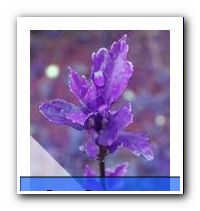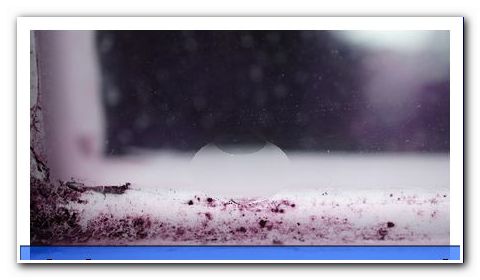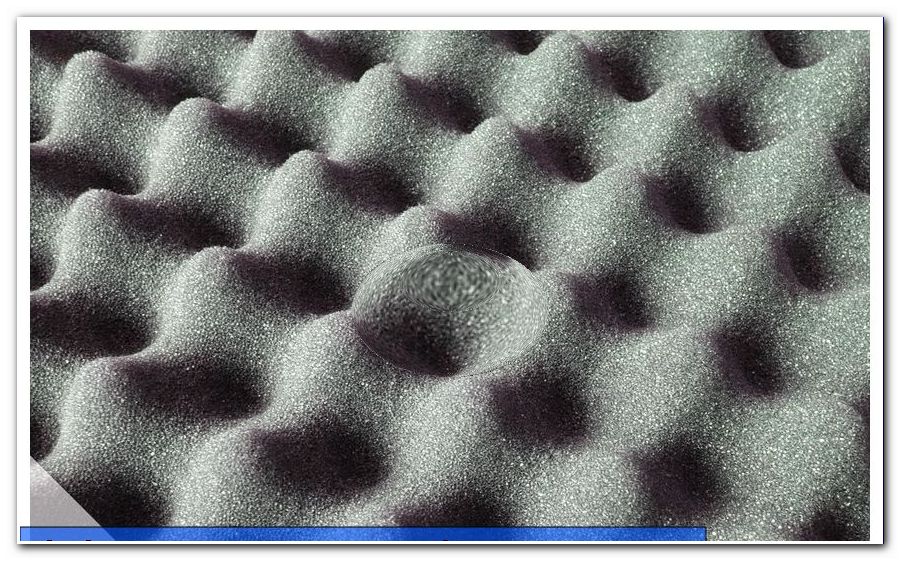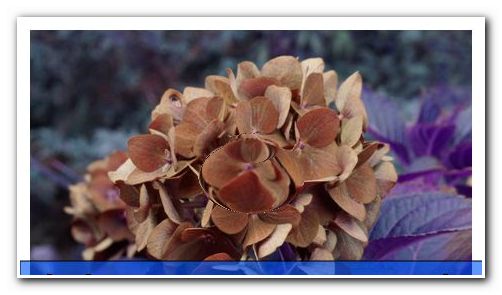Hibiscus in the garden - instructions and information on the planting time

- variety selection
- planting time
- Location
- plant substrate
- Plant hibiscus
- to water
- Fertilize
- neighboring plants
There are different types of hibiscus. Not all are suitable for planting in the garden. When buying must therefore be taken to choose hardy species. Recommended are the garden marshmallow ( Hibiscus syriacus ) and the marsh marshmallow ( Hibiscus moscheutus ). The garden marshmallow becomes a bushy shrub with flowers between 8 and 12 cm in diameter. Even as a high tribe, this hibiscus cuts a fine figure. The swamp marshmallow convinces with huge flowers, up to 25 cm in diameter.
However, in winter, the plants freeze above ground during heavy frost, but reliably release them again in spring (usually late). The rose marshmallow ( Hibiscus rosa-sinensis ), which is often sold in the flower trade, is not suitable for planting in the garden. These beautiful flowering plants are ideal tub plants. They must be overwintered frost-free.
variety selection
In order to enjoy his garden hibiscus, the selection of the corresponding varieties is very important. There are quite sensitive, but also very robust varieties. The "Woodcutting Workgroup" has tested hibiscus varieties for the garden. In a multi-year trial at five different locations, the plants were put through their paces, in terms of flowering joy, health and ease of care. These varieties performed best:
- 'Speciosus' - white, half-filled to filled flowers with red inner spot, funnel-shaped, densely branched habit, up to 250 cm high
- 'Coelistis' - blue-violet, simple flowers with red inner spot, loosely upright, medium-density branched growth, up to 190 cm high
- 'Helena' - white, simple to semi-filled flowers with red inner spot, compact, densely branched habit, up to 160 cm high
- 'Red Heart' - white unfilled flowers with large, red inner spot, compact, densely branched growth, up to 170 cm high
- 'Blue Bird' - blue-violet, simple flowers with red inner spot, broad-bushed, densely branched growth, up to 210 cm high
- 'Totus Albus' - simple, white flowers, compact, densely branched habit, up to 160 cm high
- 'Woodridge' - pink, simple flowers with red inner spot, tightly erect, 150 to 200 cm high
- 'Hamabo' - light pink, simple flowers with red inner spot, loose broad bushy growth, up to 200 cm high, very rain-resistant
- 'Pink Giant' - carmine pink flowers with red inner spot (this one with silver-gray edge), tightly upright growth, 150 to 200 cm high
planting time
The best time to plant hibiscus is spring . The plants are sometimes sensitive to frost at first, so they can grow in peace until winter. Although hibiscus can still be brought into the soil in the fall, but it is not ideal. You never know how hard winter will be and with prolonged frost, especially at high minus temperatures, the plants are extremely endangered. So who wants to play it safe, plants better in the spring, when the soil has temperatures above 15 ° C.
Location
For the flourishing of a garden marshmallow, the location is enormously important. He should be warm, sunny and protected. Ideal is a place in front of a heat-radiating wall. Normal winters easily survive garden marshmallows, but in severe frosts, a good location is sometimes vital.

- With too little sun and light, the plants bloom only sparsely
- In a drafty, unprotected location, frostbite can occur
- especially cold easterly winds and cold weather in the sunshine are dangerous.
plant substrate
Important for the garden hibiscus is a nutrient- and humus-rich soil. This must be sufficiently permeable so that no waterlogging can occur. To achieve a good frost tolerance, a sandy soil is particularly favorable.
- permeable
- nutritious
- humous
- sandy (but then provide enough nutrients)
- pH above 6.5 so slightly acidic
- on heavy, wet clay soils do not ripen before winter and often freeze to death
Plant hibiscus
 Search appropriate location
Search appropriate location- Pick out a suitable plant hole, at least 50 cm deep
- Loosen soil in the planting hole so that the roots can spread out easily
- If available, add some ripe compost to the planting hole
- Water
- Place plant bales in a bucket of water until no more air bubbles rise
- Remove the plant from the container and place in the planting hole
- Not too deep and not too tall
- Cover with garden soil
- Press lightly, do not get stuck
- Mold casting ring
- Einschlämmen
- Water abundantly the next few days
- Apply mulch layer to suppress weeds and avoid drying out
to water
After planting, watering is vital. The soil must not dry out until it has grown, but standing wetness must be avoided. Watering works well with a casting ring, where all water arrives exactly where it is needed and can not seep into the ground unused.
Fertilize
Equal fertilizing while planting is unfavorable. It is enough to put ripe compost in the planting hole, although this is also rejected by many experts, because you never know what's in the compost everything is in it. After 6 to 8 weeks but can be fertilized. You use a normal fertilizer that contains little phosphorus but lots of potassium. In July, the last fertilizer is used so that the shoots can mature until autumn. So they are not too frost prone. In September, it is still possible to fertilize with patent potassium, which also increases the winter hardiness, even if the scholars disagree about that. I have consistently had good experiences.
neighboring plants

Although the garden fish looks most beautiful as a solitaire, he also does well with a corresponding neighborhood. Especially high strains look underplanted very beautiful. Suitable are among others: bed roses, lavender, hollyhocks and Buschmalven.


 Search appropriate location
Search appropriate location

